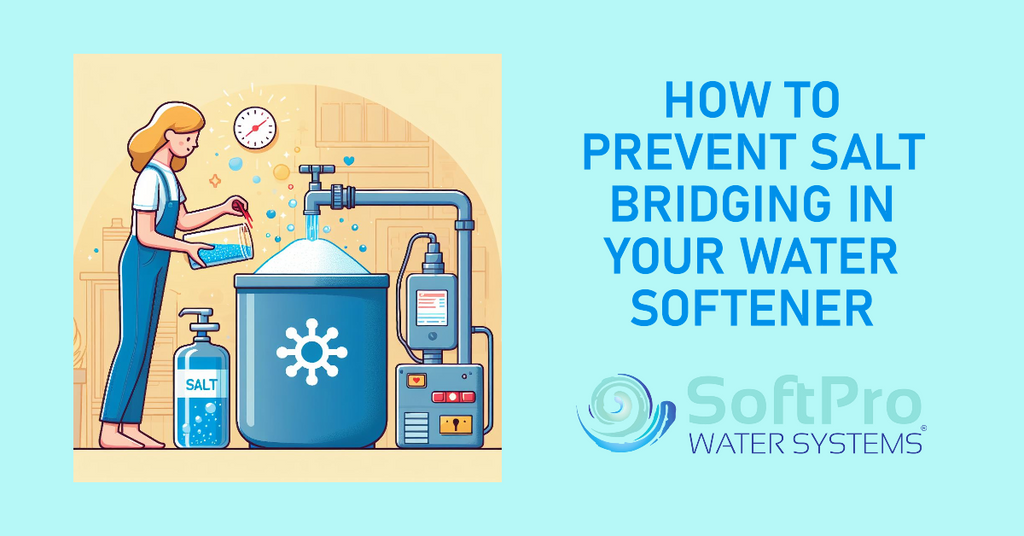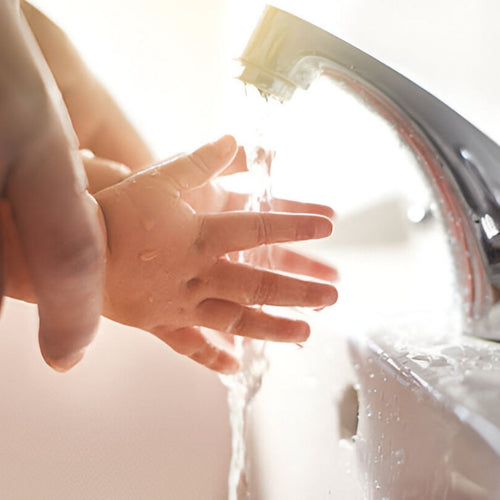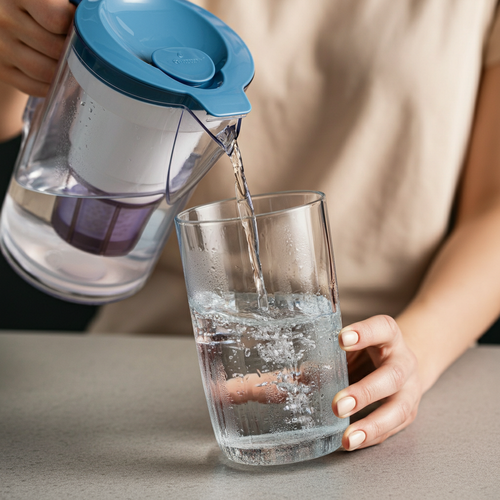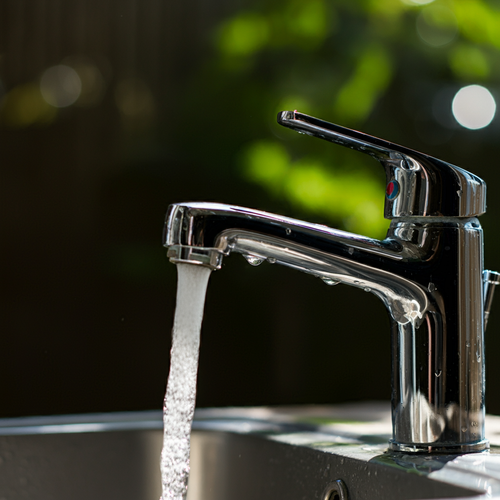If your water softener seems to be struggling, with hard water symptoms returning, the culprit could be a salt bridge. A salt bridge is a solid crust of salt that forms within the brine tank of your water softener, preventing the salt from dissolving properly and thereby stopping the softening process.
Water softeners are a vital solution for homes with hard water, which contains high levels of minerals like calcium and magnesium. These minerals contribute to issues like limescale buildup in pipes, spotty dishes, dry skin, less efficient appliances, and dingy laundry. A water softener tackles this problem by removing those hardness-causing minerals.
Let's dive into what causes salt bridges, how to prevent them, and what to do if one has already formed.
What Causes Salt Bridges?
- Humidity is Key: High humidity is the major contributor to salt bridges. Moisture in the air infiltrates the brine tank and causes salt to clump together, hardening over time. Homes in humid climates, or where the softener is located in a damp area (like a basement) are especially susceptible.
- The Salt Factor: The type of salt you use plays a significant role. Low-quality salt, such as rock salt, often contains impurities that increase the likelihood of clumping.
- Tank Level Matters: If the salt level in your brine tank gets too low, it creates a larger airspace where humidity can accumulate, promoting bridge formation.
- Under the Hood: Mechanical issues with your water softener, such as a clogged venturi or problems with the resin bed, can also contribute to salt bridging by disrupting the normal salt dissolving process.
Preventing Salt Bridges – Best Practices
- Control the Environment: Ideally, keep the humidity level around your water softener below 50% using a dehumidifier. Also, ensure proper ventilation in the area.
- Choose Quality Salt: Opt for high-purity salt pellets or crystals designed for water softeners. Look for certifications such as the NSF seal, which verifies the salt meets quality standards.
- Check Salt Levels Regularly: Don't let your brine tank get too low. Refill the salt when it's about half full.
- Maintenance Matters: Clean the brine tank periodically (according to your softener's manual) and check the venturi for any blockages. Cleaning removes salt residue and ensures proper system function.
- Prevention Tools: Some water softener models come with features to prevent bridging, or you can explore aftermarket salt bridge prevention devices.
Troubleshooting an Existing Salt Bridge
- Safety First: Always turn off the power and bypass your water softener before opening the brine tank to tackle a salt bridge.
- Break it Down: Use a long-handled tool, like a broomstick, to carefully break up the salt crust. Avoid forceful jabbing that could damage the tank.
- Deep Clean: Once the bridge is broken up, remove any remaining salt chunks, thoroughly rinse the brine tank, and refill it with fresh salt. Follow your water softener manual for flushing instructions.
- Keep an Eye Out: If salt bridging recurs frequently, it might indicate a larger mechanical problem requiring professional attention.
When to Call a Professional
- Stubborn Bridges: If you're uncomfortable dislodging a bridge yourself, or it keeps reforming despite your best efforts, it's wise to consult a water softener technician.
- Beyond Bridging: If your water softener exhibits other signs of malfunction, like leaks, strange noises, or constant low water pressure, have it professionally inspected.
- For Your Peace of Mind: A qualified technician can diagnose underlying issues, perform repairs, and recommend the best course of action for long-term softener health.
At SoftPro Water Systems, we're passionate about transforming your water and enriching your home. For over several years, we've delivered cutting-edge water softening solutions designed to combat hard water problems, optimize efficiency, and elevate your daily life. Visit us at www.softprowatersystems.com for more information or to find the right water softener for your home.
FAQs
My Water Feels Hard Again. Is it Definitely a Salt Bridge?
While a salt bridge is a common reason for your water softener not working correctly, it's not the only possibility. Other potential issues include a depleted resin bed, a malfunctioning control valve, or leaks within the softener system. It's best to troubleshoot the salt bridge first and seek professional help if the problem persists.
Can I Prevent Salt Bridges Completely?
While you can significantly reduce the risk of salt bridges, it's difficult to guarantee they won't ever form. Following best practices – using high-quality salt, maintaining humidity levels, and performing regular maintenance – greatly minimizes the chances of bridge formation.
I Broke Up a Salt Bridge. Do I Need to Do Anything Else?
Yes! After breaking up the bridge, thoroughly clean your brine tank to remove any remaining salt residue. Refill the tank with fresh salt and follow your water softener manual for instructions on flushing the system.
How Often Should I Check the Salt Level in My Brine Tank?
Aim to check your salt level at least once a month. Refill the tank when the salt is about halfway down to prevent excess space for humidity buildup.
Salt Bridges: Key Takeaways for Softened Water Success
- Humidity Matters: Controlling humidity levels around your water softener is the single most important factor in preventing salt bridge formation. Invest in a dehumidifier if necessary.
- Quality Salt Pays Off: Using high-purity salt pellets or crystals designed for water softeners significantly reduces clumping and promotes optimal softener function.
- Maintenance is Key: Regular cleaning of your brine tank and checking for venturi blockages are essential preventative measures. Follow your softener's manual for specific cleaning intervals.
- Don't Delay if Bridges Persist: If salt bridging recurs frequently despite following best practices, call in a professional to diagnose any potential mechanical issues with your water softener.
Ready to say goodbye to hard water hassles?
Contact SoftPro Water Systems today to explore our range of advanced water softeners. We'll help you find the perfect solution for your home and ensure you enjoy the full benefits of softened water.


















![Aldex Premium 10% Cross Link Resin for Water Softener [High Capacity]-SoftPro® Water Systems](http://www.softprowatersystems.com/cdn/shop/files/Aldex_10_Cross_Link_Resin_Premium_High_Capacity_for_Water_Softener_600x.jpg?v=1735853599)





















